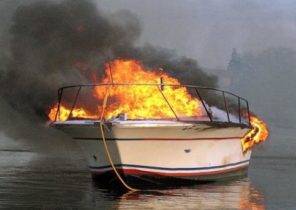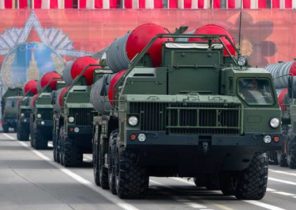The researchers analyzed two episodes of exceptional heat in Siberia, one of which was long, the other much shorter. The first example is a General increase in temperature in Siberia from January to June, which exceeded the average recorded temperature in this region from 1951 to 1980, more than 9 degrees Fahrenheit. The second example is a striking the sharp rise in temperature recorded on June 20, resulting in the Russian town of Verkhoyansk the temperature rose to 38 degrees Celsius — according to the Russian meteorological service, it has become an absolute temperature record for the Arctic.
After analyzing the data, scientists concluded that climate change increased the likelihood of prolonged periods of heat by 600 times compared to what might be in the absence of climate change. In his statement, Andrew Ciavarella (Andrew Ciavarella), lead author of the study and senior researcher at the national meteorological service of great Britain, called the results “truly stunning”.
In fact, as stated friedericke Otto (Friederike Otto), acting Director at the Institute of environmental change at Oxford University and one of the authors of this study, “without climate change we would not have seen this episode”.
In a world where there would be climate change, prolonged periods of abnormal heat has come to be in Siberia at least once in 80 thousand years “is not something that you would take into consideration or expect to see in my lifetime”, said Otto. Even under current climatic conditions, the long periods of heat should occur less than once in 130 years.
In this study, the scientists from universities and government meteorological services of Germany, the Netherlands, Russia, Switzerland and the United Kingdom apply methods of the rapidly developing science of attribution, that is, they use computer models and a huge amount of data to determine the extent to which something or other weather phenomenon was caused by human activity, in which the atmosphere gets a greenhouse gas causing warming. Under this scientific initiative called World Weather Attribution scientists found traces of such disasters as forest fires in Australia and heavy rains after the storm “Harvey”.
The results of the study the weather in Siberia has yet to pass peer review.
Heat wave in Siberia has provoked an unusual and sometimes scary phenomena, such as forest fires, invasion of the mosquitoes and the melting of permafrost, causing the destruction of the infrastructure — namely, the subsidence of the supports under one of the tanks was the cause of the spill 140 thousand barrels of diesel fuel that flowed through the neighborhood and ended up in the river. As a result of forest fires in Siberia in the Earth’s atmosphere got more greenhouse gases than any other month in the 18 years of observations.
Hausfather Zeke (Zeke Hausfather), a climatologist from the analytical center of the Breakthrough Institute, not involved in the study said its results highlight changes in the frequency of extreme weather events that occur under the impact of a changing climate. “The fact that a century ago, has happened once in 100 years now occur once in 20 or even 10 years,” he said. Although today the heat in Siberia seem unusual, if the volume of greenhouse gas emissions are not reduced, according to him, by the end of this century temperature in the nightmare of this summer will turn into the “usual summer in Siberia”.
In the absence of climate change the average temperature in Siberia during the long periods of heat would be at least 2 degrees Celsius below — that is, if this happened in 1900, but not today. By 2050, as scientists say, the rise in the average temperature for extended periods of heat in Siberia compared to 1900 will amount to 4,15-12.6 degrees Fahrenheit.
If we consider the sharp increase in temperature in Verkhoyansk June 20, according to the researchers, it was difficult to calculate the degree of influence of climate change with the same high statistical significance, as in the case of long periods of heat. However, they stressed that the probability of a sharp rise in temperature on one day was thousands of times higher than the probability of such an event in the absence of climate change.
During the press conference, which was held on Tuesday, July 14, and was devoted to the results of this study, Sarah Q. (Sarah F. Kew) Royal meteorological Institute of the Netherlands said that the results of the data analysis in Siberia became “one of the most convincing results of studies attribute to the present moment.”
According to her, if not to take decisive action to combat climate change, “we will have very little time in order to stabilize global warming” at the level called for by the Paris climate agreement designed to limit global average temperature increases to 2 degrees Celsius compared to the beginning of the industrial era.
In his statement, Dr. Ciavarella said: “This study is additional proof of the extreme temperatures that we will see increasingly around the world in terms of global warming. Importantly, increasing the frequency of these heat waves can be contained by reducing the amount of greenhouse gas emissions into the atmosphere”.






